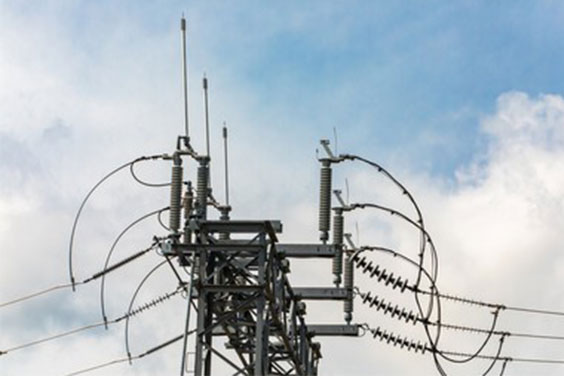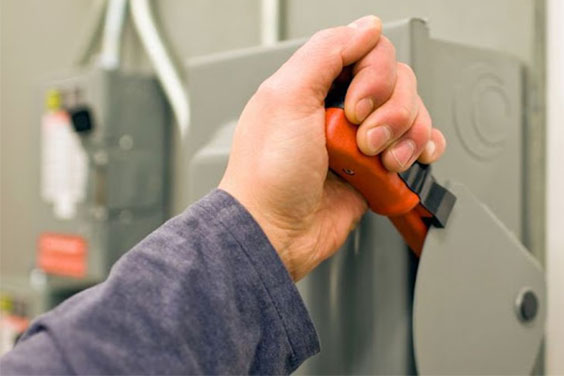Disconnect switches are also called isolator switches and safety switches. Amongst the several MV switchgear components used in electrical circuits to ensure the safety of users and equipment, disconnect switches are very important devices that must be included in every installation. An electrical circuit is incomplete without a disconnect switch as it interrupts the flow of current in cases where maintenance, repair, emergency stoppage, or switching to alternate power sources is needed.
A disconnect switch completely de-energizes a section or the whole circuit from current, making it safe for technicians to operate, as well as users. It’s only used to break the circuit and it’s commonly found in electrical distribution and industrial applications where the power needs to be stopped for maintenance, further adjustment, or reconnection to another power source.
Elecspare is a professional disconnector switch manufacturer and in the remaining part of this post, we will be discussing the types of disconnect switches, and the right specifications and standards of disconnect switches you need for a safe and smooth electrical operation.
Types of Disconnect Switches
Disconnect switches as stipulated by the National Electrical Code (NEC) are compulsory requirements for all manufacturing and industrial electrical installations. There are several types of disconnect switches depending on the condition in your environment. They can be contained in a gis substation with earthing switches to ground the part of the system that has been disconnected, assuring the safety of equipment, engineers, and users.
Below are the types of disconnect switches available.
Fused Load Break Switch
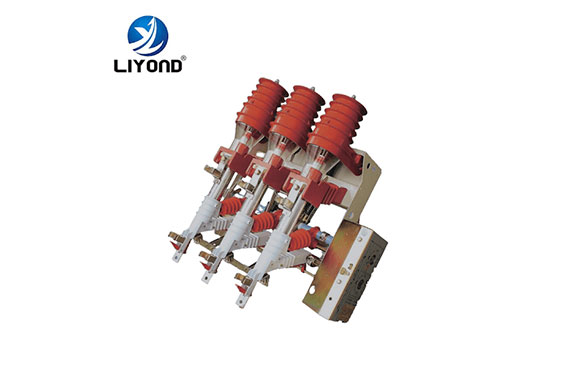
Just as the name implies, a fused load break switch is the combination of a fuse and a load break switch (LBS). The fuse function is to shut down the circuit in the event of an abnormal current. This is after the switch has disconnected the circuit.
The switch features a mechanism that allows you to manually shut off the power of the circuit. The fuse, on the other hand, has a tiny filament that is suited to the current rating of the circuit; the fuse is designed to only carry the same current that the circuit is designed to carry. The filament will melt if the circuit’s current exceeds the fuse’s rating for a long time. However, the circuit will be disconnected automatically and permanently, thereby still performing its protective function.
To restore power to the circuit, the fuse will have to be replaced. Fuses come in a variety of sizes and ratings. Standard fuses are capable of handling overcurrent situations; they break the circuit almost immediately when the current begins to pass through. Also, there are slow-burning fuses. These sets of fuses are capable of handling overcurrents for short intervals; they can only control the inrush current of motors at the start.
For quality and reliable fused load break switches, you can contact Elecspare, an load break switch manufacturer, and expert in making SF6 load break switches that are incorporated with fuses that protect you and your equipment in the event of abnormal current.
Manual Disconnect Switch
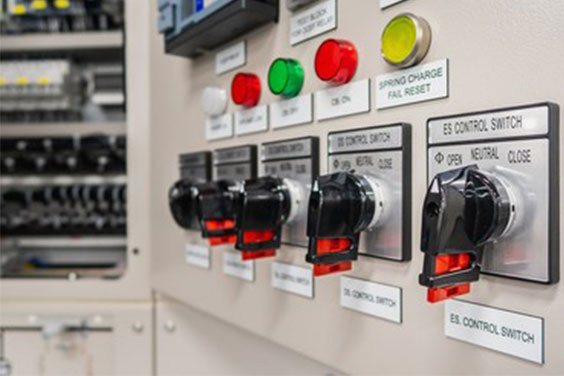
A manual disconnect switch is a type of disconnect switch that is fitted in a battery-powered electrical system. It prevents the contacts from welding shut and obliterating the switch’s capacity to function. It can be used in a lot of applications, even in the most demanding ones. Machines, power distribution, motor control centers, and solar systems all benefit from this high-performance, compact disconnect switch.
Electrical Disconnect Switch
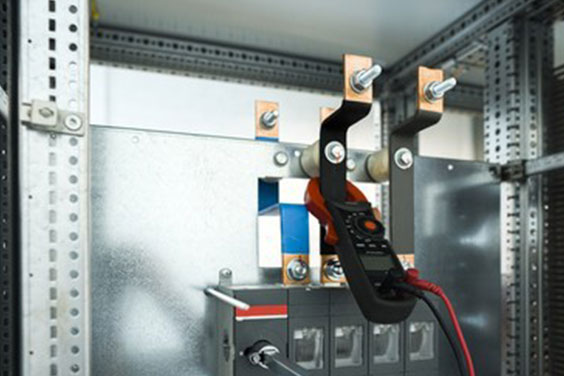
An electrical main disconnect switch is a type of disconnect switch that isolates all the wiring in a home, workplace, industry, or other structure from the power source, which is usually the utility power supply. This disconnect switch is also called the service disconnect. It is the first disconnect switch after the utility meter.
It could be a special disconnect switch that is housed in an outside box enclosure or the main circuit breaker on the home’s main service panel. It is also feasible for a residence to have a service disconnect on the exterior and a main service panel, having its own main breaker on the inside.
Motor Operated Disconnect Switch
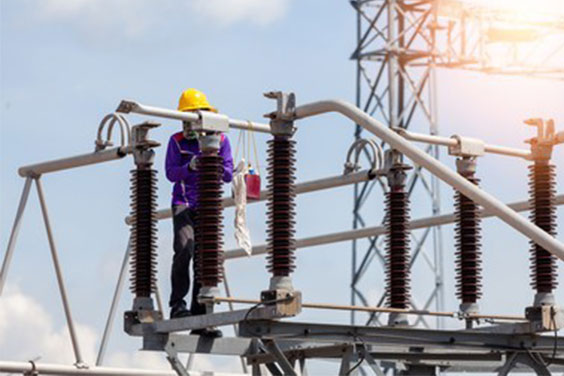
The motor operated disconnect switch combines the function of the two types of disconnect switches above (manual disconnect switch and electrical disconnect switch). These types of disconnect switches are operated manually and electrically through a motor operator. There are two options (motor or manual) on the disconnect switch from which you can choose. This selection will be based on the operation you want to perform at every occasion.
Air Disconnect Switch
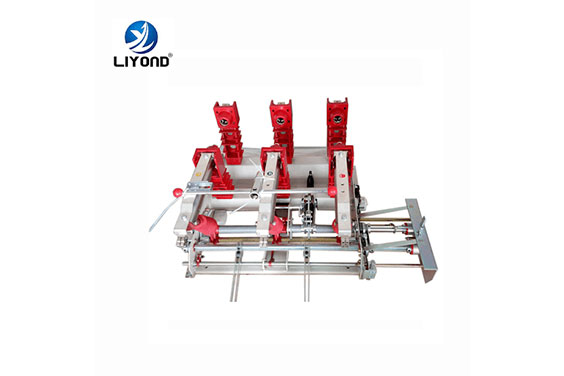
This disconnect switch is also called a “gang-operated disconnect switch.” It is called an air disconnect switch or air load break switch because it operates in the air rather than other mediums. It’s called a gang-operated disconnect switch because the three distinct switches for each phase are operated as a group from a single control.
The function of the air disconnect switch is to disconnect the transformer from the load, not to disconnect the substation from the incoming line. It’s similar to a huge safety switch that cannot break a load. It can only interrupt or break the substation transformer’s comparatively little “magnetizing current.” This is the minimal amount of current required to establish the magnetic field in the core of the transformer.
Before using the air disconnect switch to disconnect the primary or high voltage side of a substation, it’s imperative that you first disconnect it from its secondary or load side.
Vertical Break Disconnect Switch
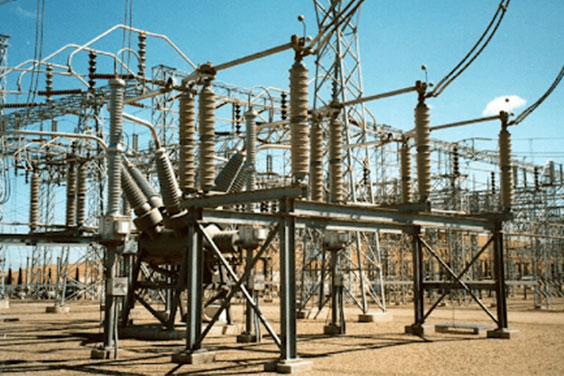
A vertical break disconnect switch is a critical component of a power plant that prevents power from being sent to the grid when a circuit fails, resulting in a system outage. Depending on the amount of voltage applied, the vertical break disconnect switch will either open or close in a circuit.
The vertical break disconnect switch is built to handle high-impedance circuits and can complete a circuit without causing overload. These heavy-duty vertical disconnect switches are commonly found in power transmission equipment that allows the application of voltage for longer periods of time than is normally possible.
If the current in a circuit exceeds the specified point, the circuit breaker will offer an instantaneous break-over to a new voltage level. The vertical break disconnect switch delays the delivery of voltage until the current falls below the setpoint, allowing the voltage to be provided to the circuit for a longer length of time.
Vertical break disconnect switches are required while working on de-energized lines to comply with safety rules. Furthermore, when combined with current interrupting advancements, the devices are totally load-breakable.
Center Break Disconnect Switch
The center break disconnect switch is the most common form of disconnect switch in use around the world. It has two revolving insulators that open and close the contacts in a sideways motion, which distinguishes its design from others. The two insulators are installed on an integrated base frame. In parallel arrangements, the current paths opening to the side produce a larger phase distance than other types of disconnect switches.
This disconnect switch is suitable in cases where a customer wants to employ a less expensive switch with two insulators per pole rather than three as in a vertical or double break switch. It is very suitable for applications where there’s restricted overhead clearance.
With this disconnect switch, flexible and customized applications are possible, such as in parallel, diagonal, or in-line configurations. The supporting structure can be easily and conveniently fitted to the integrated base frame. Durability is also ensured with a sophisticated contact system that needs no maintenance. Magnetic interference is reduced by extending Radio Influence Voltage (RIV) limits for each voltage level, resulting in greater efficiency and reliability.
High Voltage Disconnect Switch
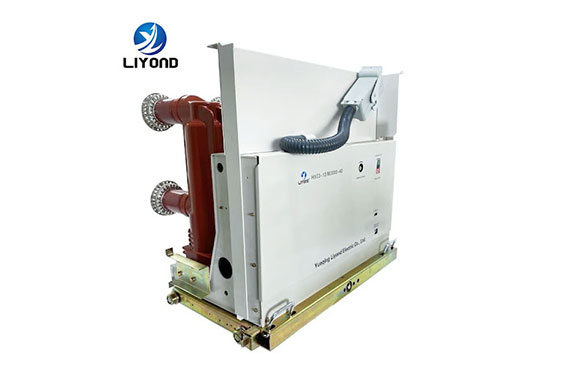
This is a major type of disconnect switch that is used in the process of de-energizing an electrical circuit for maintenance, servicing, or inspection. As a professional high voltage disconnect switch manufacturer, we make a high voltage circuit breaker, where the arc extinguishing process happens in a vacuum medium. Also, the process of switching on and closing of current transmitting contacts and interrelated arc interruption happens in a vacuum chamber that is called a “vacuum interrupter.”
High voltage circuit breakers are very common in electrical and industrial applications where the power source needs to be disconnected for safe operation.
The working principle of the high-voltage circuit breaker is very simple. When the high-voltage circuit breaker contacts are opened within the vacuum, an arc is formed among the contacts due to the metal vapor ionization in the contacts. However, it’s possible for the arc to be easily extinguished because the electrons, ions, and metallic vapors created throughout the arc rapidly condense over the outsides of the high voltage circuit breaker contacts, restoring their dielectric strength.
Medium Voltage Disconnect Switch
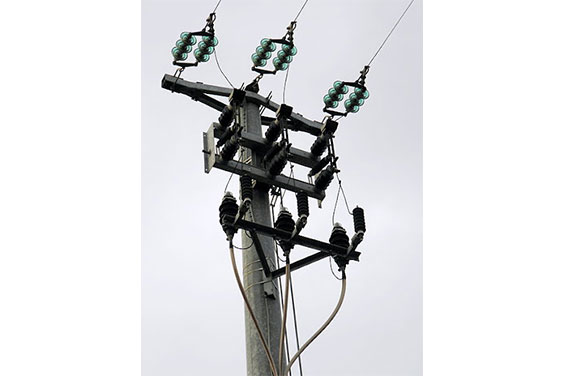
A medium voltage disconnector is a type of disconnect switch that has a voltage range of 3 to 36 kV. This type of disconnect switch comes in different styles as it can be used as an indoor switchgear as well as an outdoor switchgear. It could be metal-enclosed indoor switchgear, metal-enclosed outdoor switchgear, and so on.
A medium voltage disconnect switch’s interruption medium could be insulated with oil, SF6 gas, air, or vacuum. Regardless of the configuration of the medium voltage (mv) cubicle, the primary function of this type of switch is to interrupt current when there’s a need for it.
3-Way Disconnect Switch
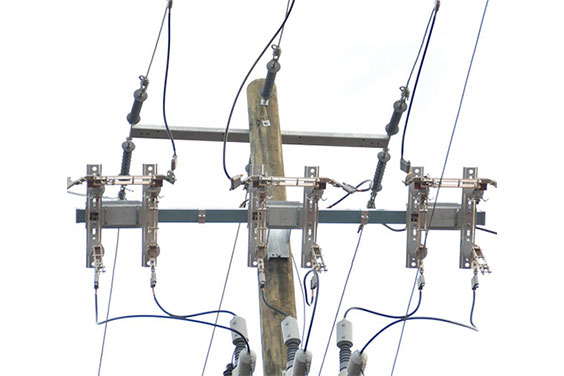
There are different types of electrical switches and amongst them is the 3-way switch. This type of electrical switch is frequently used to control a light fixture from two different locations in a room, a large hall, long corridor, stairway, etc. It is usually used in a big room so that you can easily control the light fixture from whichever end of the room you are.
In a building where the 3-way switch is installed, it is very paramount that a 3-way disconnect switch is used as it helps to interrupt current during maintenance, repairs, or even inspection.
Double End Break Switch
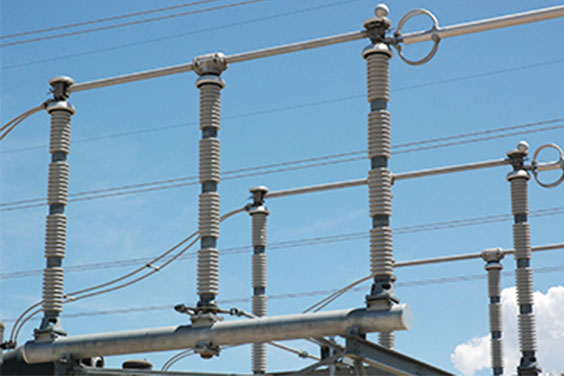
This is a type of disconnect switch where the connected circuits are opened at two ends. It is frequently used in substations with limited phase space and where a vertical opening of the current line is impossible. In this type of disconnect switch, the current path rotates in a horizontal direction. It also has a lower profile design when compared to a vertical profile.
It has numerous advantages over single-end break switches. Amongst them are:
- The swingarm for higher switches exceeding 300 kV is more stable. The horizontal rotation is intrinsically more stable in terms of mechanical vibration since the switch blade moves in the center and breaks at both ends.
- There is an improved switching in strong winds. Because each blade is connected in the center, the wind force acting on it counterbalances the opposite end, substantially reducing the spinning torque created by the wind.
- In heavy ice loading, there is an improved switching. Because the rotation is in a horizontal plane, lifting heavy ice and ice sliding down an inclined blade and potentially clogging a pivot mechanism are eliminated.
- Because the blade is not electrified as it swings to the end of travel in the open position, phase spacing doesn’t become a concern.
- It has a higher arc interruption. The arc length increases at a higher rate per degree of rotation.
- The corona is lower when it is opened and this is because of the streamlined shape and the lack of a pointed switchblade that remains electrified after opening.
Ground Disconnect Switch
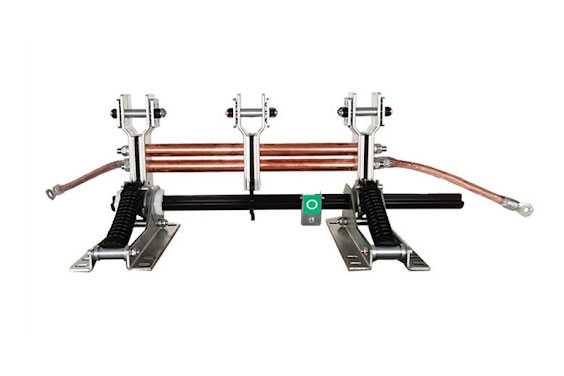
A ground switch is also called an earth switch. It is a safety device that is used in electrical engineering just like circuit breakers and isolators. A grounding switch is used to ground the leftover charge in a power line after it has been disconnected from the source. After the circuit breaker and isolator have broken or opened the circuit, residual charges always remain. To remove the charges, a ground switch is used.
A ground switch has a snap action closing mechanism that makes it come into action to protect engineers and users when there is an abnormal current flow. It can be motorized as well as being configured to withstand short circuits. Ground disconnect switches are applied in a variety of high-voltage switchgear and also serve as a safety device in the overhead of high-voltage electrical equipment.
There is also the High-Speed Ground Switch (HSGS), which is sometimes called a fault-initiating switch. It is a cost-effective alternative to expensive circuit breakers for circuit protection. The HSGS is available as a stand-alone unit, as part of a hookstick-operated switch, or as a single phase of a group-operated switch. The use of high-speed disconnect switches as attachments is becoming more widespread since it allows for test operation during initial installation and routine maintenance without causing a system failure.
Hookstick Operated Disconnect Switch
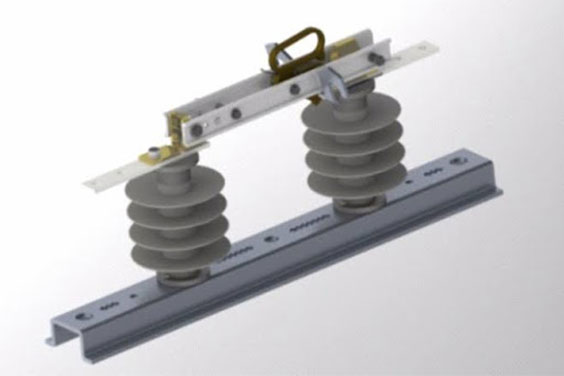
A hookstick operated switch is an insulated switch composed of fiberglass that is used to work with electrified overhead cables and electrical equipment. It is used anywhere on a circuit where manual action is needed and anywhere on a circuit where a disconnect capability is needed.
The hinge pivots on the dual high conductivity hard-drawn copper blades are widely spaced for optional deflection resistance. In a well-constructed hookstick operated disconnect switch, the blade alignment is never an issue for the operator and it closes with pinpoint accuracy, independent of the years the switch has been in use or the operating condition.
A hookstick operated switch can be used alone or in conjunction with a vertical, center, or double disconnect switch. It can have additional essential component options, such as a painted blade for added visual confirmation, key interlock hardware, mechanical interlock hardware, or electrical interlock hardware, which provides you the versatility to meet any project’s needs.
Magnetic Disconnect Switch
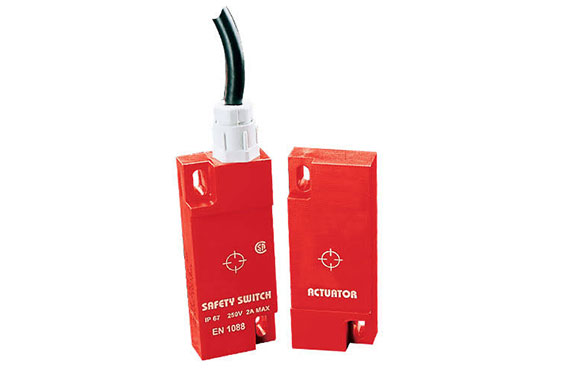
A magnetic disconnect switch is an electrical switch that interrupts current in the presence of a magnetic field. It is frequently used in situations where moving elements cannot make direct contact with the switch. Examples are explosive environments or when submerged in liquids, and when repetitive contact with a mechanical switch would result in unwanted wear. This type of disconnect switch is used to repair, maintain, or improve the functionality of magnetic safety interlock switches.
It often combines manually and magnetically actuated contactors. Usually, the front of the contactor panel is where all external conditions are made. The incoming line terminals are at the top of the contactor mounting panel, while the load terminals are at the bottom. The wiring connections for the control circuits are done on the panel’s side.
Coaxial Disconnect Switch
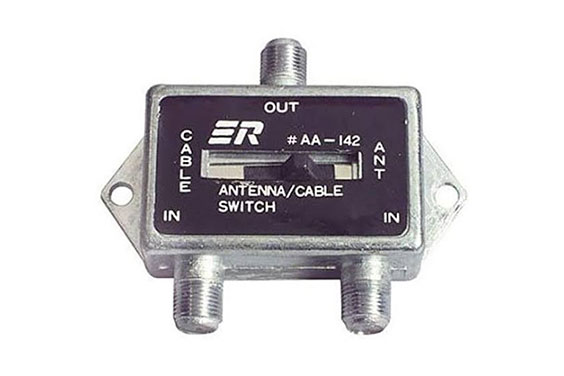
It is a form of transmission line that is used to transmit low-loss high-frequency electrical signals. Telephone trunk lines, broadband internet networking cables, cable television transmission, and linking radio transmitters and receivers to their antennas are all examples of its applications.
A coaxial disconnect switch differs from other shielded cables in that the dimensions of the cable and connections are precisely controlled to ensure a precise, consistent conductor spacing, which is required for it to function as a transmission line. Coaxial cable connectors are used to connect cables to other devices and are designed to keep the wire’s shielding intact. They provide secure and durable connections. A protective outer sheath is also present on coaxial cables.
To ensure the safe and smooth operation of electricity while using coaxial cables, a coaxial disconnect switch is needed to ensure that operators are protected from electrical hazards.
Main Disconnect Switch
A main disconnect is a switch that disconnects electricity from branch or feeder circuits downstream of it, usually in a panel as a breaker or a disconnect switch next to it if it’s just a main lug and the installer desired a local disconnect. The term “main disconnect” is commonly used to indicate a power outage that affects the entire building, although it can also refer to a power outage that affects a single panel.
A main disconnect could be a switch that controls the power outage of the whole building or just a single room. In the case where each room in a building has its own power outage control, you can call that a main disconnect switch because it dictates if there will be light in the room or not. On the other hand, the accessibility to light for the whole rooms in a building could be controlled from one point. The controller at this point is called a main disconnect switch.
Specifications and Standard
We are a certified high voltage disconnect switch manufacturer and our products meet international standards and specifications. These are some of the international standards and specifications.
- GB 1985-2004: High-Voltage Alternating-Current Disconnectors and Earthing Switches
This standard covers the design and installation of indoor and outdoor, closed and open terminals, and rated voltages of 3. 6kV, as well as AC disconnectors and earthing switches operating at 50Hz. This standard also covers the working mechanism and accessory equipment for these disconnectors and earthing switches.
- IEC 60694, IEC 62271, & IEC 62271-102: Common Specifications for High-Voltage Switchgear and Controlgear Standards
This international standard covers AC switchgear and controlgear for indoor and outdoor installation, as well as operations at service frequencies up to and including 60 Hz on systems with outages greater than 1,000 volts. Except as otherwise indicated in the applicable IEC standards for the particular kind of switchgear and controlgear, this standard applies to all high-voltage switchgear and controlgear.
- DL/T 486-2000: Specifications for High-Voltage AC disconnectors and Earthing Switches
This standard is for voltages of 3 kV and above. It deals with high voltage disconnectors and earthing switches, their operating mechanism, as well as their auxiliary equipment. Industries affected by this standard are the electricity and power industries.
- DL/T 593-2006 & GB/T 11022-2011: Common Specifications for High-Voltage Switchgear and Controlgear Standards
This standard covers voltages of 3 kV and higher, as well as power systems with a 50 Hz frequency that run indoor and outdoor AC high voltage and control devices. This standard is applicable to all high-voltage switchgear and control equipment, unless specifically specified in the high-voltage switchgear and control equipment products. In addition to the requirement of this standard, the corresponding product standards should be consulted independently.
Conclusion
The essence of high voltage disconnect switches in an electrical installation cannot be overemphasized. They act as protective agents against electrical accidents, such as electrocution, fire outbreak, etc.
Elecspare is a high voltage disconnect switch manufacturer and in this post, we’ve discussed the several types of high voltage disconnect switches that you can use for your home, industry, and other places. With these disconnect switches, you, your technicians, and your electrical equipment will be safe when inspection, maintenance, or repair is being carried out.

